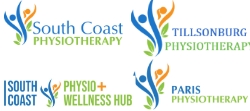Managing Migraines: Dry Needling Therapy for Relief

Throbbing head pain. Light sensitivity. Nausea. Anyone who suffers from migraines knows the symptoms well. Living with migraines can profoundly impact your quality of life, and managing migraine pain can be challenging. However, if you’re looking for a new way of managing migraines, dry needling could be a solution!
If you suffer from migraines, you’re not alone: estimates suggest 12% of Canadians (nearly 4.5 million people) experience recurring migraines. Between 1%-2% of Canadians have chronic migraines, meaning they experience at least 14 migraine attacks monthly.
Migraines can be incredibly debilitating. The pain alone is enough to interfere with day-to-day activities, and most people with migraines experience additional symptoms, such as sensitivity to light or sound. Furthermore, movement and basic physical activity can often worsen your migraine pain.
The physiotherapists at South Coast Physiotherapy understand the difficulty of living with migraines. We also know that dry needling is a proven method of addressing migraines and other types of headaches, like cervical and tension-type headaches. It might sound strange, but a few strategically-placed needles can do wonders!
If you want to learn more about the relationship between managing migraines and dry needling, keep reading! You can also give us a call at our Brantford clinic.
Understanding Migraines
A migraine is a specific type of headache characterized by intense, pulsating pain along one side of your head. Migraine attacks can last four hours or up to three days and are often triggered by certain factors that vary from person to person. Many people attempt to manage migraines by identifying and avoiding triggers when possible, although this approach doesn’t work for everyone.
A migraine attack has four distinct phases:
- Premonitory Symptoms: These symptoms occur about a day before the migraine develops and will vary from person to person. Examples include mood changes, fluid retention, or food cravings.
- Aura: Some people will experience neurological symptoms, especially visual disturbances, right at the onset of their migraine. Some people do skip this phase, with their migraine headaches occurring suddenly.
- Headache: The headache itself will usually build in intensity. You may also experience additional symptoms, like nausea, vomiting, or light and sound sensitivity. Some people have migraines without headaches.
- Postdrome: Many people will feel fatigued or confused after the migraine attack subsides. This phase can last as long as a day.
Treating a migraine can be a challenge. Over-the-counter pain medication will usually not address all migraine symptoms, although some migraine-specific drugs are available. Many people will utilize simple remedies like resting in a cool, dark room or drinking plenty of fluids.
A Unique Approach to Managing Migraines: Dry Needling
One possible solution for migraine pain is dry needling, a simple pain management technique that involves inserting long, thin needles into certain spots throughout your body, called trigger points.
Trigger points are small, tight knots in your myofascia, the tough, connective tissue that wraps and protects all the muscles in your body. Trigger points can cause local pain (pain at the trigger point itself) and referred pain (pain elsewhere in the body).
For some people, migraines or other headaches may be deferred trigger point pain, so dry needling can help manage migraine pain. Inserting a sterile needle into a trigger point releases the tension in the myofascia, helping to alleviate your discomfort.
Studies show that dry needling can be an effective tool in managing migraines, particularly in reducing migraine attacks and helping to make what attacks do happen less severe.
At South Coast Physiotherapy, we’ll generally combine dry needling with other treatment techniques depending on the causes of your migraine. For example, we might include targeted exercises to address migraines caused by musculoskeletal issues, or we might incorporate vestibular rehabilitation if your migraines are linked to issues with the vestibular system.
What to Expect During Your South Coast Physiotherapy Appointments
During your first appointment, our therapists will conduct a comprehensive examination to help us better understand your exact migraine experiences. We’ll talk to you about your specific symptoms and triggers and help you identify any patterns in your attacks. We’ll also take a complete health history and perform movement screens to help us identify potential musculoskeletal impairments.
All this information helps us develop a migraine treatment plan that suits your needs. We customize every plan to our patients and will let you know if we think dry needling can help with your migraine or headache pain–as well as any other treatment techniques we recommend!
Your actual dry needling sessions will generally take about 30 minutes. Our physiotherapists will locate any trigger points contributing to your migraine pain, sterilize the skin, and gently insert the dry needle into the trigger point. If you’re in the middle of a migraine attack, you may feel immediate relief, but you’ll likely need a few sessions before you start to see a decrease in migraine attacks.
Need Help Managing Your Migraines? Try Dry Needling!
Don’t let recurring migraine attacks keep you from living your life. Dry needling at South Coast Physiotherapy can help relieve pain and decrease the frequency of your migraines, improving your overall quality of life.
When it comes to managing migraines, dry needling offers a wealth of unique benefits. Schedule an appointment with us today to see if it’s right for you!
